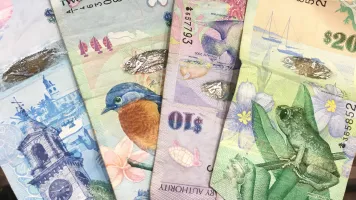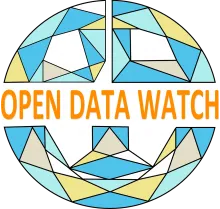Global funds and financing instruments for statistics
Applying lessons learned for a global fund for development data
National statistical systems (NSSs) in low- and lower-middle-income countries are often under resourced and understaffed. They face an urgent need to adapt and develop to meet the increasing needs of data users and the evolving demands of the 2030 Agenda for Sustainable Development. In response, the United Nations High-level Group for Partnership, Coordination and Capacity-Building for Statistics for the 2030 Agenda for Sustainable Development adopted the Cape Town Global Action Plan for Sustainable Development Data (CTGAP).[1] The CTGAP is a global roadmap outlining the pathway towards the modernization and strengthening of statistical systems. The CTGAP calls on “leaders to achieve a global pact that recognizes the funding of NSS modernization efforts is essential to the full implementation of 2030 Agenda.”
The objective of this paper is to build on the recent work on financing for development data and explore the potential of establishing a global pact in form of a global fund for development data. This paper summarizes interim findings of the initial stage of research examining previous global funds for statistical and non-statistical activities. This paper also recommends steps for a more extensive research study on the topic.
Need for more and better funding for development data: Despite the excitement surrounding the data revolution, domestic and donor financing for statistics has not materialized to support the revolution. Low-income countries, where domestic budgets to support NSSs are severely constrained, are at risk of being left out of the data revolution. Many are dependent on donor financing to build and improve their statistical systems, but development assistance for data remains extremely low, according to recent PARIS21 PRESS numbers.[2] To build high-functioning statistical systems capable of meeting the demands of the Sustainable Development Goals (SDGs), increased and improved financial support from the international community is essential.
The lack of funding for statistics is especially a problem for monitoring and achieving the SDGs. Two studies, one published by the UN Sustainable Development Solutions Network (UN SDSN) in 2015[3] and another by The Global Partnership for Sustainable Development Data (GPSDD) in 2016[4], estimated the incremental expenditures needed to produce data for the SDGs. The studies found that the total amount of development assistance needed to support the production of Tier I and II SDG indicators would average between $635 to $685 million a year from 2016 to 2030. The 2016 PRESS data for 2014 show a total of $470 million in commitments for statistics. Based on 2014 funding levels, the shortfall in aid for statistics is between $350 and $400 million a year. Given the low levels of financial support for statistics, innovative fundraising and financing strategies are needed to find new sources and increase traditional sources of support.
But the development data community is not only facing the challenge of low levels of funding but also concerns about the efficacy of current funding and assistance approaches. This is the drive behind the movement for more and better financing for development data. The consensus is that the traditional approach to funding for data and statistics places a heavy reliance on technical assistance; lacks country ownership; focuses heavily on donor priorities; and focuses only on the national statistical office and not on strengthening the broader national statistical system.[5] Because of these issues, past efforts to support statistical capacity have not yielded the substantial increases in statistical capacity required by the data revolution. Recommendations for addressing these issues include: reshaping donors approach to statistical capacity development to promote country ownership; improving coordination; increasing the sustainability of financing; aligning support with national priorities; and emphasizing results-based support.
Strengths and weaknesses of existing funding mechanisms: Although there is agreement on the problems with existing support to data for development, each funding mechanism has its own strengths and weaknesses and these must be addressed differently to create a comprehensive funding strategy. Chapter 4 of the 2017 Development Co-operation Report(DCR) outlined priority steps to rethinking donor support for statistical capacity building and included an analysis of the strengths and weaknesses of different funding modalities, such as domestic tax revenues, loans and credits, bilateral grants, technical assistance, results-based aid, and pooling arrangements for statistical capacity building.[6] These are displayed in Table 1 below.
Table 1: Strengths and weaknesses of current funding modalities for statistical capacity building
While all these funding modes have been tried, they have not yielded the substantial increases in statistical capacity required by the data revolution. Could a global fund for development data provide a more efficient mechanism for mobilizing the needed resources, as envisioned by Strategic Area 6 of the Cape Town Global Action Plan? A global fund is a multilateral, pooled financing mechanism. It combines the mechanisms of a multilateral trust fund and pooled financing with a comprehensive, sector-wide approach to capacity development. The establishment of a global fund for development data has the potential to create more and better financing for data by improving coordination among donors and countries as well as between donors; promoting national priorities and country ownership; reducing transaction costs through pooling; stabilizing and sustaining funding sources; and championing a more results-based financing culture.
Can the establishment of a global fund for development data overcome the challenges of current financing instruments and achieve the goal to create more and better financing for the 2030 data agenda? To answer this question we began by creating an inventory of existing global funds and reviewing evaluations of their efficacy to understand how their creation affected the development funding ecosystem and outcomes in their respective sectors. An initial scan of the funding landscape resulted in an inventory of 24 global funds, 16 of which have a primary or secondary focus on statistics. Nine evaluations of global fundswere also included in the inventory. A summary table of the inventory can be found at the end of this document. We attempted to record the current amounts disbursed and committed for each fund, but these documents were not readily available for most funds. This raises questions about the transparency of existing funds and points to gather additional data to fully understand the current funding landscape.
An initial review of nine evaluations of global funds helps us begin to answer the questions around more and better financing:
Has the creation of global funds led to more financing? The total amount of ODA has not increased since the advent of global funds.[7] While global funds may not have increased the overall amount of development assistance, global funds may increase the funding for some sectors and decrease it for others, leaving the total amount of ODA flat. More sector-specific research needs to be done to understand how the creation of a global fund increases or decreases or changes the distribution of ODA and other sources of funding.
Do global funds create better financing? More research is needed but the preliminary answer is, it depends. The structure of the fund, incentive system, funding horizon, and other attributes will affect a fund’s ability to create more sustainable, country-driven funding with improved coordination. Preliminary research shows that, some funds have improved coordination and strengthened existing governmental systems and have not created the fragmented funding landscape that some had feared.[8] In terms of the longer term financing horizon, global funds have generally provided more stable, long-term funding, especially when compared to bilateral grants.[9] A deeper dive, however, is needed to answer fundamental questions about whether or not a global fund will provide better financing and what are the best practices that a global fund for development data should incorporate.
Next Steps
More work is needed to fully understand the challenges to establishing a global fund, best practices of existing funds, and how funds affect the larger development funding landscape and the data ecosystem. Our initial research on this subject has not yielded enough information about their performance to answer all our questions therefore we propose a robust research study examining the prospects of setting up a fund. The elements of this study include:
- Meta-evaluation of existing global funds: This involves a survey of the evaluations of current global funds. It will explore the best practices and enabling conditions associated with successful funds and examine the challenges to establishing a global fund. This work will inform a set of guidelines or best practices that could be adapted for statistical capacity building and new approaches to capacity development, as described by PARIS21’s Capacity Development 4.0 Framework.[10]
- Key informant interviews with experts and fund managers: A series of interview should be done to help identify good practices and other key characteristics to the successful design of a fund. Attention will also be given in the interview to answer questions about how the establishment of other funds affected the funding ecosystem.
- Influence of existing funds on the status quo: One question that arose during our research was whether funds have moved money around, possibly depleting other funding sources, or have in fact resulted in additional funding. Further, the ability of existing funds – whether they focus on statistics or not – to strengthen and support current data systems in their field should be explored.
- Strengths and weaknesses of traditional funding instruments and options for a new global fund: Building on our previous work for the Development Co-operation Report, expand the study of traditional forms of funding and explore their strengths and weaknesses, including characteristics of their funding streams and methods of governance. Based on the findings, next steps could include developing a set of pros and cons for each funding instrument as well as the most appropriate options under a range of contexts.
- Transparency of current funds: The initial scan of global funds illustrated a lack of transparency or access to information on the details of the fund. Future work should include the creation of a checklist to help grade the transparency of a fund. Possible questions in the grading scale include:
- Does the Fund have an up-to-date web presence?
- Does the Fund publish an annual report and is it available online?
- Does the Fund publish an evaluation of the fund activities and is it available online?
- Does the Fund publish a budget and is it available online?
- Does the Fund provide a contact for a fund manager?
- Does the Fund provide an organizational management chart of its governance and host organization?
The strategic direction for any new fund should not only be to develop more financing for data and statistics, but also better financing. Research should produce recommendations around how part of a potentially new global fund’s role, in addition to raising resources, could be offering strategic recommendations and identifying and addressing weaknesses in the data ecosystem. Future research is to be used to guide the establishment of new funding mechanisms for development data as well as raise questions around the role of a special global fund for data in the data for development financing space. This work should ultimately contribute to the development of a set of recommendations or guiding principles for setting up a global fund for development data.
Summary table of global funds for statistical and non-statistical activities [11]
Footnotes
[1] https://unstats.un.org/sdgs/hlg/Cape-Town-Global-Action-Plan/
[2] http://www.paris21.org/press2017
[3] http://unsdsn.org/resources/publications/a-needs-assessment-for-sdg-monitoring-and-statistical-capacity-development/
[4] https://opendatawatch.com/the-state-of-development-data-2016/
[5] https://opendatawatch.com/blog/oecd-outlines-six-data-actions-for-sustainable-development/
[6] https://www.oecd-ilibrary.org/docserver/dcr-2017-9-en.pdf?expires=1523972816&id=id&accname=guest&checksum=3AF2C9AFA2F3454B23DA3818215A8822
[7] https://ieg.worldbankgroup.org/sites/default/files/Data/Evaluation/files/tf_eval.pdf
[8] http://unsdsn.org/wp-content/uploads/2017/04/Science-Global-Fund-lessons-for-SDGs.pdf
[9] http://siteresources.worldbank.org/CFPEXT/Resources/TFfactsheetapril2017.pdf
[10] http://www.paris21.org/capacity-development-40
[11] Other information in the inventory includes: Purpose; participating donors; total allocated funds; total disbursed funds; beneficiaries; source to funding amounts; additional notes. The “Indicative Amount in Fund” is further described in the inventory with date, donors, and other information. The inventory of global funds can be accessed here.

